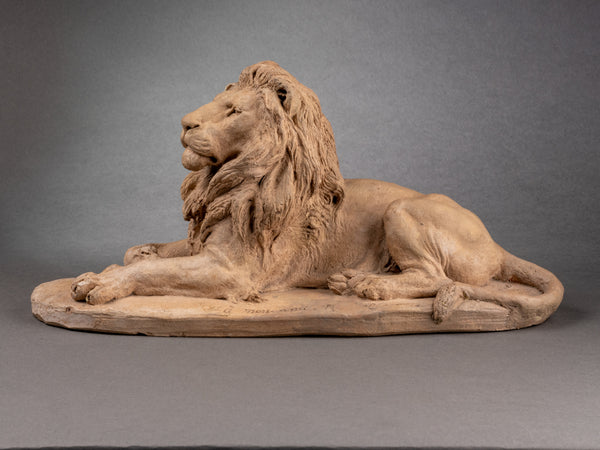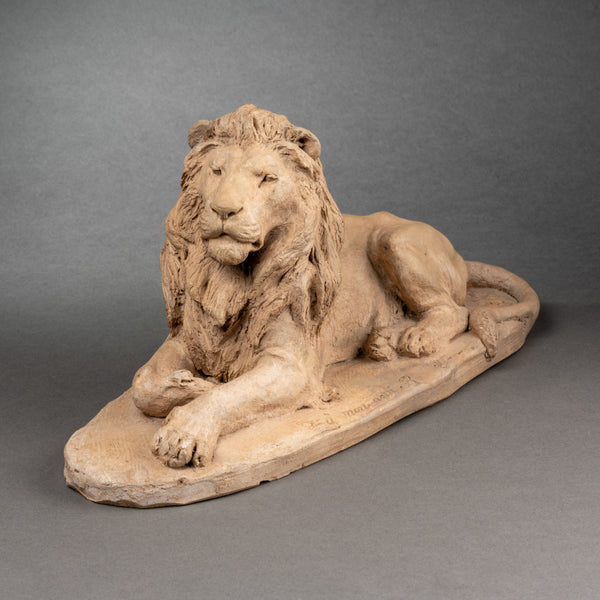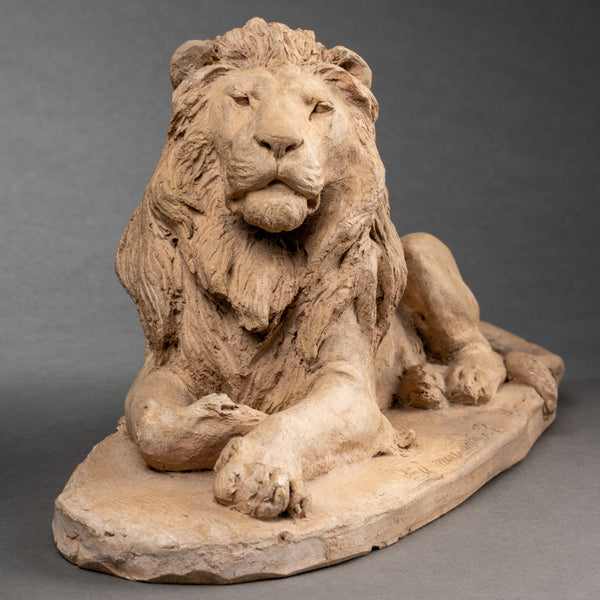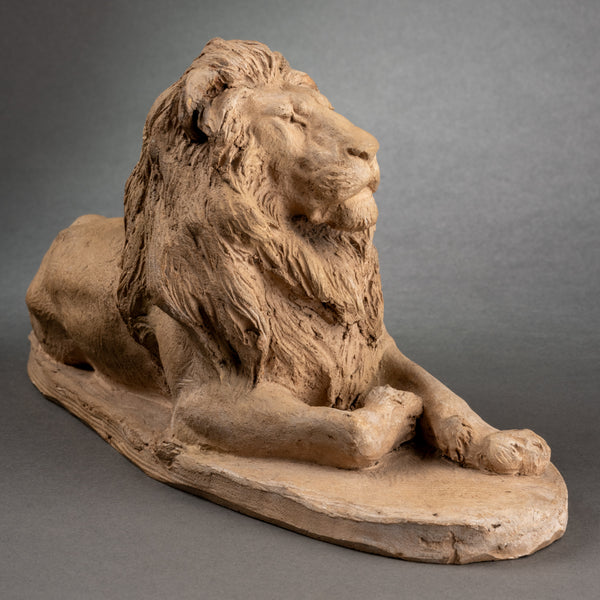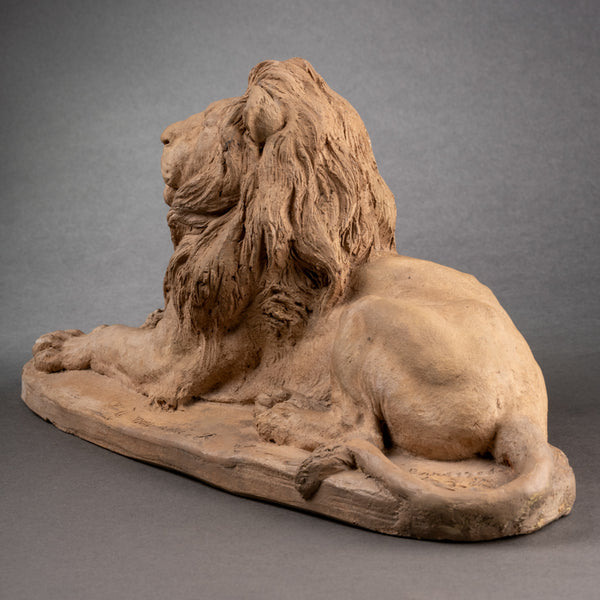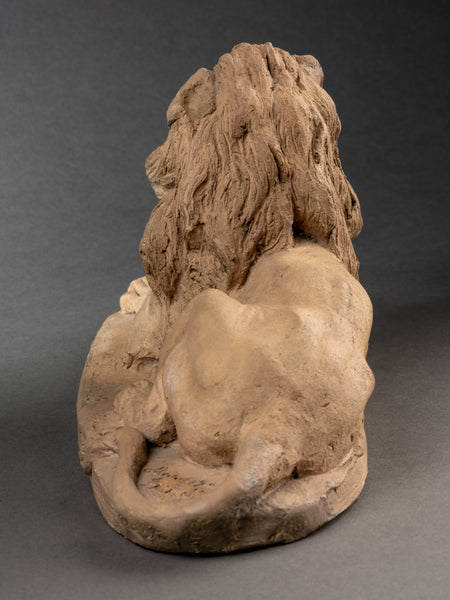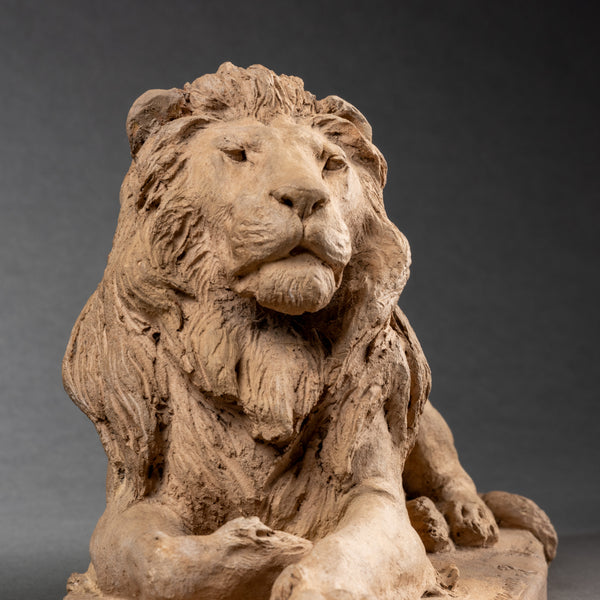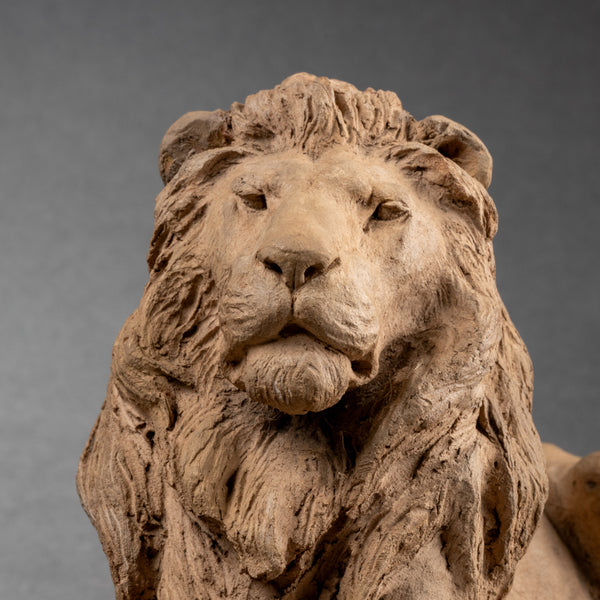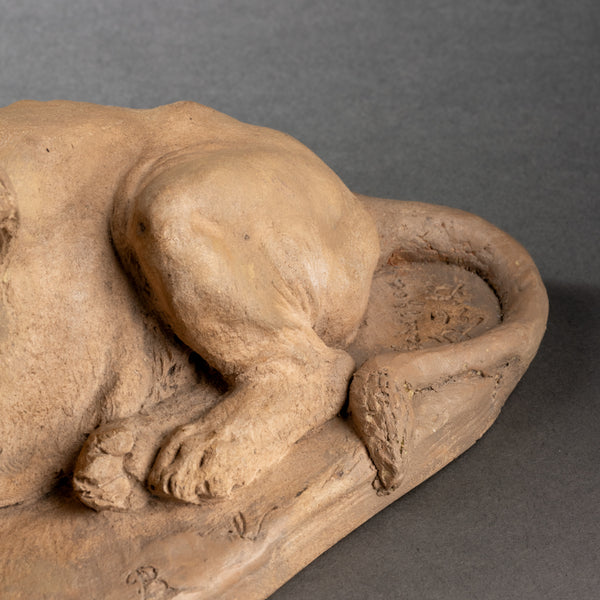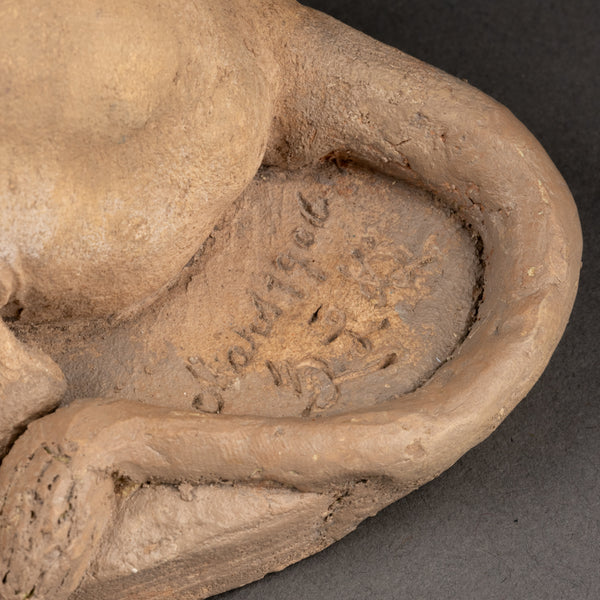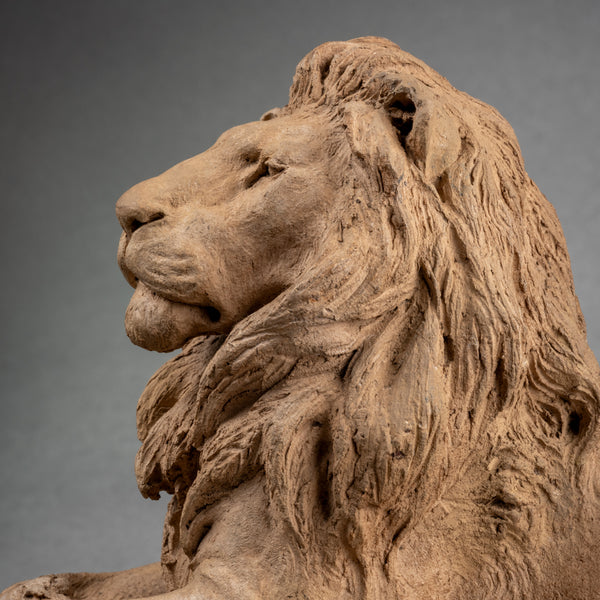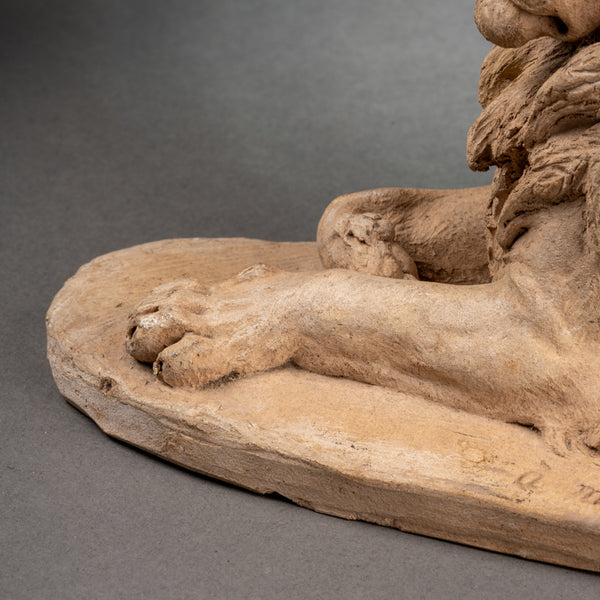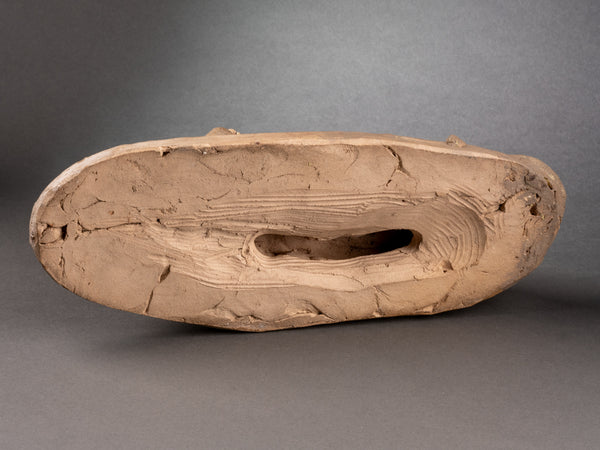Ytiga NUMATA (1873-1954) Reclining lion - Exceptional original terracotta dated 1906
Ytiga NUMATA (1873-1954)
'Lion lying down'
Very rare original terracotta proof.
Signed in Japanese with the artist's three ideograms.
Dated 1906 and bears a faded dedication on the terrace ('To my friend...')
France, most probably made in the workshop of Rodin*, 1906.
Good condition. Small old restoration at the base (under the tail).
Dimensions: Height 12 cm x Width 26 cm x Depth 10 cm
Biographical references:
Ytiga NUMATA begins her apprenticeship at the Tokyo School of Fine Arts. He studied French with the aim of training in France and obtained trainee status at the Manufacture de Sèvres. He realizes that ceramics can be a means of sculptural expression and that it should not be limited to the anecdotal framework of the small decorative object.
The sculptor also shows the desire to adapt the Sèvres processes to a more Japanese iconography. It was with Auguste RODIN, with whom NUMATA worked in 1905 and 1906, that he perfected his skills in clay modeling, before his return to Japan where he plays a fundamental role in the revival of ceramics and sculpture.
He stayed a second time in Sèvres in 1921. He is generally considered the founder of ceramic sculpture in his country. The first Japanese to receive the Legion of Honor, he created circa twenty sculptures during his stay at the Manufacture nationale de Sèvres.

















